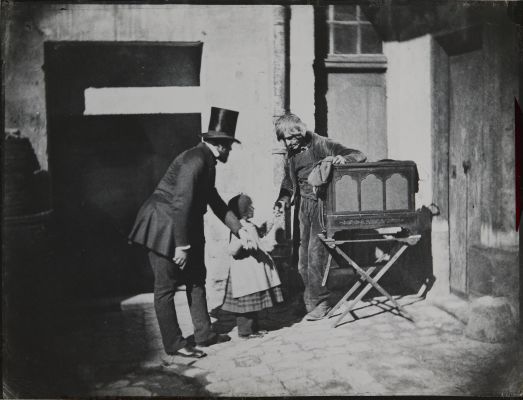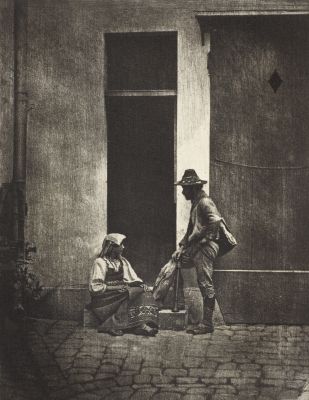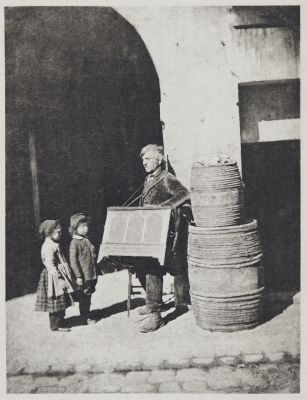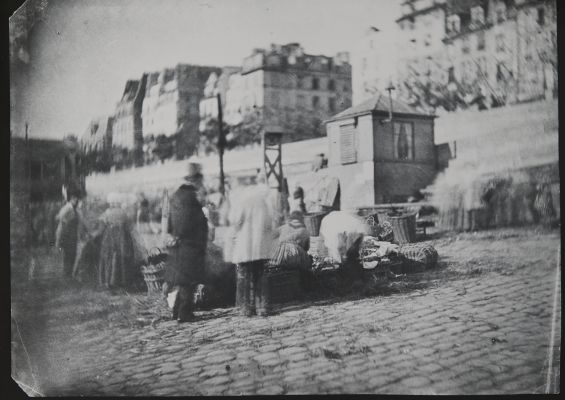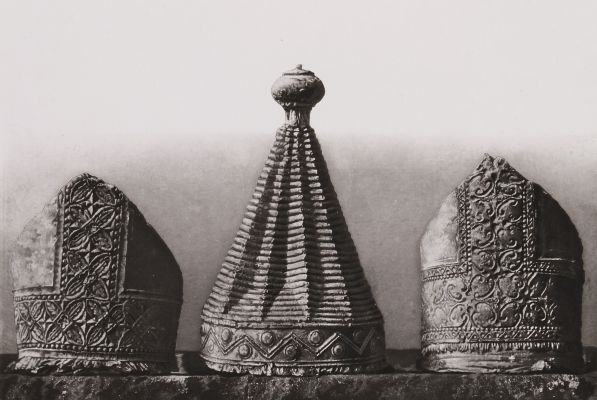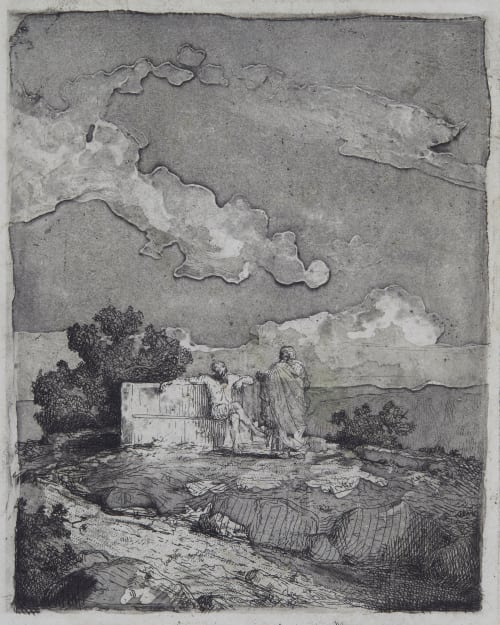
Title
Scène pastoraleArtist
Nègre, Charles (French, 1820-1880)Key FigureDate
1850Process
PhotogravureAtelier
Charles NègreImage Size
13 x 10 cm
Specific test notes on reverse – multiple etch unique test print.
The painter Charles Nègre, encouraged to take up photography as a study-tool by his teacher Paul Delaroche, became one of the early masters of the medium in France. After a short period of experimenting with the making of daguerreotypes, he started using the calotype (paper negative) process in 1847. Like many others who were dissatisfied with the changing appearance of salt or albumen prints as they faded, Nègre actively pursued an alternative printing method that could combine subtlety of tone with permanence. He studied helioqrovure (photogravure) with Niépce st. Victor, taking out a patent on his own method in 1856. He continued to refine the process until 1867 in an effort to produce photoengraved images that were capable of rendering the subtle gradation of tones seen in photographic prints.
Nègre created cloud formations through a combination of acid-resistant varnish brushed on to the plate, powdered resin distributed over the plate’s surface, and successive submersions of the plate in an acid bath. The final results demonstrate Nègre’s technical and visual sophistication with platemaking. The addition of skies was meant to correct the limitations of early photographic emulsions, which were so sensitive to blue light that in most photographs, details of the sky were lost to overexposure of the negative, which resulted in a murky swath of tone in the positive or print. As a consequence, it follows that photographic images featuring clouds at this time are de facto manipulated, whether by hand or by the combination of various negatives.
Both relief and intaglio engraving are essentially line art, although certain techniques such as aquatint and mezzotint, or the use of closely spaced dots and crosshatching, produced tonal effects. The mixed-process engraving, employing an etched ground with mezzotint, aquatint, stipple and line additions, was widely used for better-quality illustrations and framing prints at the time photography was introduced. Its velvety surfaces and subtle shading with lights and darks had conditioned the aesthetic outlook for a generation, privileging tone over line. Lithography, which came into wide use during the l820s, employed scraping, tints and washes, in addition to crayon delineation on the stone, to provide tonal effects. Photography’s superb tonal range and relatively immediate results from nature offered certain advantages, both aesthetic and technical, over the visual vocabulary of engraving and lithography, and it was these features that experimenters with the new photomechanical media hoped to capture in ink. [1]
References
[1] Wright, Helena E. "Photography in the Printing Press: The Photomechanical Revolution." Presenting Pictures / Ed. by Bernard Finn. Ass. Ed.: Robert Bud.London: Science Museum, 2004.: 21-42.
Lewis JW. Charles Negre in Pursuit of the Photographic. 2012.
